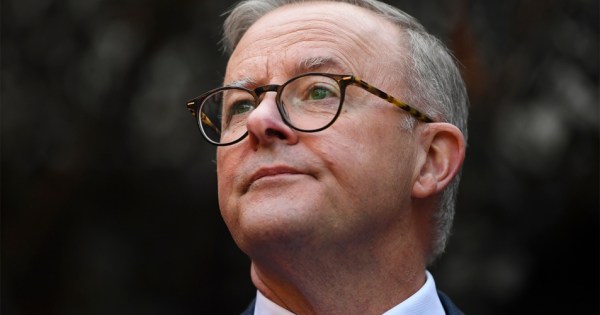On Turnbull’s Press Club Speech
Bruce Graham writes: Re.”Turnbull’s vision for 2018: basically 2016, with a dash of 2008″ (Thursday).
Having listened to Turnbull’s press club speech, I am surprised that more has not been made of his comments on energy storage. He spent more time talking about this than about clean coal. Lack of energy storage is the limiting factor in expanding both solar and wind power, and while renewable generation has increased, little effort has been put into actual utility scale energy storage facilities. Turnbull repeatedly promoted increased use of pumped hydro in particular.
“Clean coal” is a dead duck. I expect Turnbull knows that, so promoting it is either a distraction, or a sop to the right wing and minerals council. There is no plan to put in government money, so nothing will happen. Increased onshore gas production in the southern states is real government policy which he is pushing, while hypocritically ignoring the precipitating problem. We have lost off gas, but it is being exported. Active promotion of systemic scale energy storage is an acknowledgement that renewables are here to stay. Conservatives attack both solar and wind power on the basis of energy security. Promoting energy storage is a particularly pragmatic way of sidestepping those opponents, and moving forward with renewables. Pumped hydro, in particular, is something which may attract government spending, and can find support in his party. Gratifyingly, he did not mention nuclear at all – It is and will remain just too expensive.
Renewable energy is a lose-lose problem for Malcolm. Those who support it will stay with the Greens, whilst his own right wing is looking for signs of backsliding. The press club speech was an under appreciated balancing act.
Nic Maclellan writes: Re. “Turnbull’s vision for 2018: basically 2016, with a dash of 2008″ (Thursday).
Bernard, Bernard, Bernard. You have a go at the government for using catch phrases instead of real-world analysis (“clean coal”, “ultra-supercritical coal-fired generators”), then you do the same thing to spruik nuclear reactors (“proven technology”, “zero carbon emissions”).
Surely a critical journalist should look at the whole life cycle for nuclear power – from uranium mining to decommissioning power plants and waste disposal – to make a proper assessment of their emissions (I’ll give you as hint – it’s more than zero). And as for “proven technology”, what sort of reactors are we talking about? The third generation farce in Olkiluoto, Finland that is billions of dollars over budget and years behind schedule? The two EPRs at Hinkley Point in England that are expected to cost 18 billion pounds (billion, not million)? Or the fourth generation micro-reactors, on the drawing board and almost certain to be ready to make Kiribati emissions free by 2100.
You correctly argue against new coal plants, saying “laypeople would be the ones paying through the nose for what is an inordinately expensive technology.…More problematically, the energy industry is completely uninterested in building new coal-fired power plants.” A quick Google finds numerous business analysts saying exactly the same thing about nuclear reactors – and investors are walking away, leaving taxpayers to carry the can (“Next-Generation Nuclear Reactors Stalled by Costly Delays” https://www.bloomberg.com/news/articles/2017-02-02/costly-delays-upset-reactor-renaissance-keeping-nuclear-at-bay).
On Trump and Turnbull
John Richardson writes: Re. “While Trump and Turnbull fiddle, Nauru burns” (Friday).
More fake news as Josh Taylor asks “whether Turnbull has won or lost by standing up to Trump.” Maybe Josh could tell us when our great leader allegedly stood-up to Donald or anyone-else for that matter?







Nic Maclellan rails against nuclear electricity as a newfangled technology that has produced nothing but unforeseen, expensive and avoidable problems. No mention of the hundreds with boring accident-free records, of heavy duty electricity generators all around the world. It is that successful engineering experience that will take the load in any global response to eliminating carbon fuels. Like the mass produced Liberty Ships of WWII, the rollout of mass produced reactors would use conservative, well-proven reactor designs.
BruceG – I was surprised to hear Talcum even mention pumped storage but he then merely bemoaned the lack of it.
We have a wonderful example immediately to hand in the Snowy Mountains Scheme which, apart from supplying water, generates vast quantities of electricity.
Not the topography of Tasmania but nonetheless numerous areas up & down the GDR which would be ideal for small scale installations.
“Small scale” being the crucial aspect – maintainable by local labour.
AR, check out the stats on the Snowy Hydro. According to “wiki snowy_mountains_scheme”, the total capacity is 3.77 GW. That’s when there is enough water, so average generation is less than that, at 0.51 GW (*). Compare that to our national average consumption of 30 GW: it’s less than 2%, hardly “vast”, and small scale installations can’t add much more. I think you’ve been fed a flower-power delusion that nukes are unnecessary. With an ungodly sized consumption, we must install ungodly sized generators.
(*) The figure for generation of 0.51 GW comes from “wiki snowy_hydro generating_assets”, that uses jargon units to quote 4500 GWh per year. In the International Units that we all learnt at school, that comes to 0.51 GW.
@ Bruce Graham I have to disagree with your assessment that little is being done in Australia around energy storage. Both SA and the ACT have provided government subsidies for battery storage, in WA Synergy has a couple of suburbs that are trialing large scale batteries, Horizon Power in WA are trialing storage in regional areas and in the commercial sector Australia has Redflow who developed and produce a zinc bromine large scale battery.